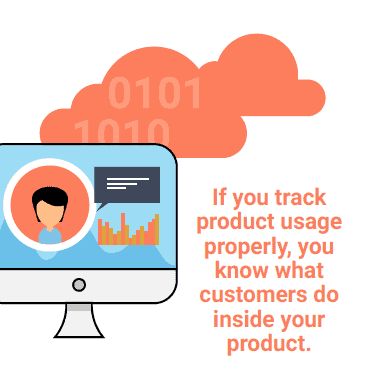Major technology changes, big data, agile development, and the rise of the cloud have changed the way our customers buy, deploy and interact with our products. And our products have changed, too. Rather than being just a collection of features packaged into something, they’re pulling extra duty as sales channels, communication mediums, and tools for educating customers. They’re also the primary drivers of our users’ perceptions about our companies.
Welcome to the product-led growth movement: an age of leveraging the in-application experience and our product data to do a better job of converting, retaining, and upselling customers. But product-led growth isn’t just about using products to acquire and develop customers. It’s not just freemium. It doesn’t only work in simple sales when the user and buyer are the same person. And it’s not a replacement for sales and marketing teams.
To understand the emergence and importance of the product-led growth movement, you first need to understand how we got to where we are today—in the middle of a lot of changes. Consider three of the biggest disruptions companies and consumers experience today:
- Recurring revenue: everything (it seems) is purchased by subscription, and customers must be resold and converted over and over
- Changing buyers: enterprise software budgets have shifted to lines of business directly and new workforce participants are digital natives
- Changing expectations: design thinking and consumer interfaces have changed expectations from all users—including business users—and the UI/UX of past applications is no longer acceptable in any circumstance; there’s no patience for bad experiences
We’re entering an age that I like to call product love. For a clear understanding of what’s changed, let’s look at the traditional customer journey, which is a fairly linear progression
There are only a couple of critical conversion points in this traditional journey: a marketing conversion that gets to the “try” stage, a sales conversion that gets through “buy” and a successful implementation. And product teams have had no direct responsibility for any of those.
But the journey is no longer linear. Instead, it’s cyclical. Evaluation and trial, adoption and use, delight and advocacy, renewal and expansion. All your customers are subscription customers who re-buy your software annually, quarterly, or maybe even monthly. It’s not just the “buy” stage that repeats, it’s the whole progression. Customers must be made aware of the product’s value, educated about capabilities, and convinced to buy—repeatedly.
This shift in the customer journey has everything to do with the product because most parts of this journey take place in the product application. The value-add activities that other teams perform are moving into the product. Self-service trials and freemium offerings are taking the place of the traditional POC, and marketing teams are working against goals for product-qualified leads. Customers get very far into—and sometimes all the way through—the sales process without directly interacting with a single salesperson.
In a much broader way than ever before, it’s all about the user experience. Companies differentiate based on core product functionality, as well as on the customer experience—the cumulative value-adding activities that surround the product. As these two pieces come together, the product becomes a competitive battleground and every role has a stake in the product experience. Ultimately, this leads to an opportunity (really a necessity) to address how your product leads (or doesn’t lead) to growth. There are three critical areas on which to direct your focus.
Conversion: Optimizing the Trial Experience
In the trial experience, you have a limited window to show customers enough value to convince them to convert, which poses challenges for how to educate them. To solve this, companies can be tempted to show as much as possible, but this isn’t necessarily the best approach.
Instead, look for patterns. Which usage patterns correlate with successful trials? Are there three or four features common to these trials? After you’ve identified these types of patterns, build models of successful trials that reflect what users are (or aren’t) doing during the trial experience. Then onboard and educate users in ways that highlight what you want them to do.
Ultimately, you want to develop and highlight the fastest path to value for trial users. If you do this, you are likely to see significant increases in trial conversions, thus leading to paying customers. Note that this process might be very different from the onboarding experience you use for new paying customers, and that’s all right. For trials and freemium customers, the focus often needs to be different.
Another point of friction I see is a lengthy trial process with heavy set-up requirements. It requires a lot of sales and sales engineering effort and often significantly prolongs the sales cycle. You can improve this by moving as much education and training into the application as possible. Also, leverage sandbox environments to bypass extensive setup requirements. Both efforts will reduce sales cycle times significantly.
Retention: An Opportunity to Improve
This may seem obvious, but customers who don’t use your product won’t continue to pay for it. Sure, they may for a month or two, but eventually, they’ll churn.
You can’t fix what you don’t know is broken. You first need to know if, how, and when your customers are using your product. Without this knowledge, you can’t identify and fix engagement issues. Track product usage, analyze the data, use in-app messaging to drive users to adopt high-value features, and have an escalation policy in place for customers whose usage patterns identify them as high-risk.
Another area to look at is onboarding, as the effectiveness of your onboarding process is the biggest predictor of future churn. The better the experience, the better your overall retention. If you’re going to invest in retention, start by building an effective, targeted, and customized onboarding experience. Ideally, it’s segmented based on important criteria, such as user role, product plan level, or jobs your customers are trying to accomplish.
Expansion: Using Your Product
The easiest way to increase revenue is by selling more to existing customers. But one challenge many of us have is reaching the right customers in up-sell or cross-sell campaigns. We want to target efficiently, and we want to avoid spamming existing customers with offers that don’t interest them. Using product data to better target sales outreach and personalize marketing campaigns makes up-selling and cross-selling easier.
In-app offers targeted to customers based on usage patterns is one solution. For example, create segments based on usage patterns that correlate with a high probability of an upgrade conversion, then use those segments to target the right candidates.
If you track product usage properly, you know what customers do inside your product. Use that in your up-sell and cross-sell campaign messaging. For example, “We see you use our NPS features extensively. Did you know that in our professional version you can look at your NPS based on the segments you define? We have found that financial industry customers like you get great value from this because of X, Y, and Z.”
Finally, salespeople can use product data to prioritize customer outreach. If you build usage pattern models, you can stack-rank customers by their likelihood of buying an upgraded or add-on package. Share this list with sales and they will significantly increase close rates while ensuring the sales team only spends time with less qualified opportunities if they have it to spare.
Driving Product-Led Growth
While there are general principles related to product-led growth that you should understand and apply in all cases, other factors (your company, product, individual situation) will determine what works best for you. Ultimately, though, your customers’ experience coupled with your own product data is what will lead to success in converting, retaining, and upselling your customers.
Learn More
Certification Courses
Podcast
- Listen for Eric Boduch’s Dec. 13 podcast on PragmaticLive
Articles
- Improve Your Customer Experience with a Product-Led Go-to-Market Strategy
- Improve UX with In-App Guides
- Identify and Diagnose Customer Churn
Author
-
Eric Boduch is co-founder of Pendo. Follow him on Twitteror connect with him on LinkedIn.











